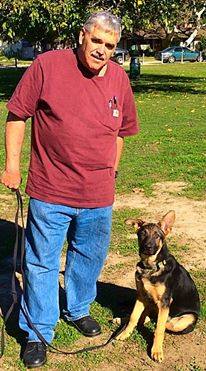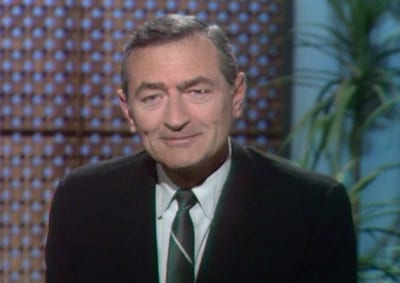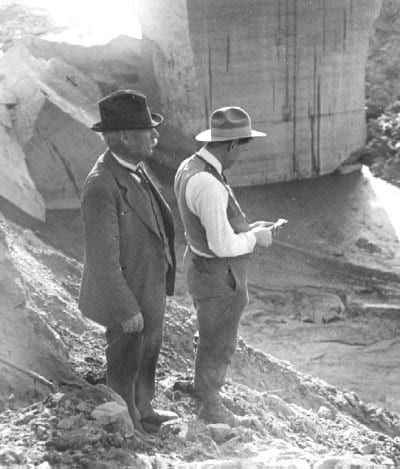This page is under construction.
Table of contents
My Obsession with that Dam Story
By Don Ray

It was Halloween of 1965 when I learned for the first time about the collapse of the Saint Francis Dam. It was a Sunday.
I was sixteen.
Sunday evening was the highlight of my week — at 6:30 p.m. on KNXT-TV, Channel Two, my favorite television show aired.
“Ralph Story’s Los Angeles.”

Even though I hated every history class I’d taken in Burbank schools, I would never miss watching “Ralph Story’s Los Angeles.” You see, Ralph Story presented history lessons that appealed to me. They were always about the greater Los Angeles area, and the way he told the stories captivated me.
The first of the three segments of that half-hour program was about the Santa Ana winds. It was more about science than history, but I could relate to the hot desert winds that messed up yards and sometimes fanned brush fires (they call them wildfires now, but they were really brush fires) in Southern California.
The third segment was about a new machine that was able to destroy classified documents. Truth be told, I don’t remember much about that story because I was still mind-blown over the middle segment.
Here’s how the veteran newsman Ralph Story introduced it:
“There’s an old western saying and it goes like this:
“‘Wind has ‘often ripped our area. Fire has scarred it. Flood has saturated it. Earthquake has shivered and cracked it.
“‘But the worst disaster in the history of Los Angeles was not touched off by nature; it was caused by man.’
“Now, tragedy doesn’t pick its locations or its victims with any regard for their suitability. And so the worst disaster in the history of Los Angeles did not even happen in Los Angeles. It happened in a lovely, fertile valley to the north of us. And it picked for its chief victim a hero-sized figure, a mighty builder whose vision insured that our minor city of 300 thousand would grow into a magnetic metropolis of two and a half million.
“He built the most marvelous aqueduct since the Romans. He also built 19 dams, and that was his tragedy. It was one too many.
(Roll contemporary film of San Francisquito Canyon as Ralph continues to speak)
“Hardly anyone drives into San Francisquito Canyon these days. It’s a remote defile a few miles above Saugus. The roads aren’t good and the fire hazard is high; there aren’t any natural wonders no mile-high waterfalls or cathedral-stands of redwood.
“Just brush and stubble and dove-tailing hills. The nearest inhabited places are not near enough, and the only installation of any interest does not encourage visitors’ tours, for it isn’t a winery or a ghost town museum.
(Cut to contemporary film of PP#2 as Ralph talks)
“It’s a powerhouse, San Francisquito Power Plant Number Two of the Los Angeles Water and Power Department.
“It was a mile and a half above the powerhouse, in a natural cleft in the canyon, that William Mulholland in 1926 erected his 19th dam (photo of the dam) and named it ‘St. Francis.’”
He got my dam attention! How could anybody flip the channel after hearing this introduction?
His stuff wasn’t about East Coast establishment crap that meant nothing to California kids. It wasn’t the impossible-to-read, high school textbooks written in long, dependent clauses in passive voice. And it wasn’t a tired, boring history teacher who made you take notes so you could remember stupid dates for a stupid exam.
It was the highest quality writing —written for the ear and for the imagination. And it was a man with a delivery that could make stuff from an encyclopedia or the phone book sound exciting.
I must confess that, by that time in my life, I had already dreamed that one day I would host “Don Ray’s Los Angeles.” That never happened, but in the early 1980s I had the dream-fantasy privilege of writing news stories for Ralph Story when he was anchoring the five-o’clock news at that same television station. And he liked my writing.
But back to 1965.
My regular Saturday evening schedule demanded that I watch the rebroadcast of the previous Sunday’s “Ralph Story’s Los Angeles” when it aired at 5:30 p.m. The cool thing is that I was just as excited to see the repeat of that segment about the St. Francis Dam.
In just seven or eight minutes, Ralph told about the construction; the doubts of Damkeeper Tony Harnischfeger, the collapse, the flood, the damage, and the 430 who died.
He told of how the city of Los Angeles assumed responsibility, and made good 15 million dollars in damage claims.
Here’s how Ralph Story ended the segment:
“Many theories were advanced to explain the failure of the St. Francis, including sabotage. Engineers finally leaned to the view that the east abutment had slipped and cracked, buckling both ends and releasing the pent-up reservoir to rush past the ruined wings.
“But William Mulholland took the blame.

“‘I thought I was right,’ he testified, ‘If there was human error, that error was mine.’
“And then he added: ‘The only ones I envy are the ones who are dead.’
“It took 90 days and two thousand men to clean up the Santa Clara Valley. It took years to repair the relations between the Valley and Los Angeles.
“But William Mulholland was beyond repair.
“He did not die until 1935, seven years after the catastrophe. But to his friends there was no doubt about the cause of his death: he died of a broken dam and a broken heart.
“He was the 431st victim of St. Francis Dam.”
By 6 p.m., Sunday, November 6, 1965, I, Don Ray, became a Saint Francis Dammy.
[To be continued]

Official program for the 50th anniversary St. Francis Dam Disaster Memorial Dinner, held March 12, 1978, at the Ranch House Inn in Valencia.
This copy signed by the organizers — journalist and dam historian Don Ray, and CSUN Prof. William S. Thomas — and by Otto A. Steen, a retired employee of the Los Angeles Bureau of Water and Light who had been the foreman in charge of the search party
after the dam collapsed
